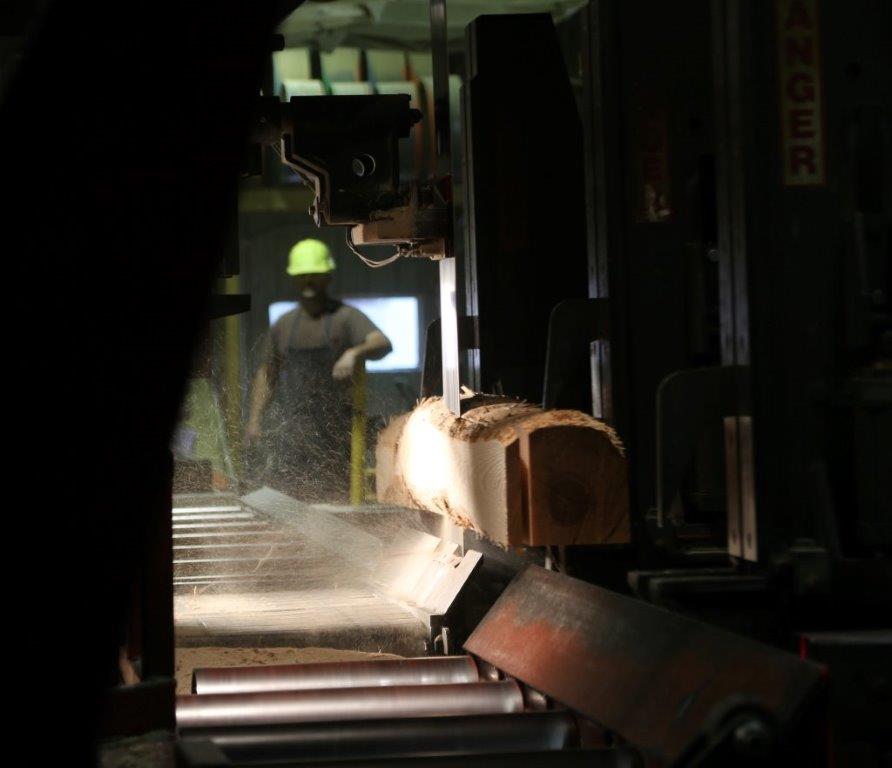
Lumber Quality
Sometimes starting with the finished product and then observing the sawmill’s operation from start to finish helps gain a good perspective on their capabilities. Look at the thickness of the lumber. See if the widths and lengths meet your criteria. Inspect the lengths to see how much over length is included. Then take note of the trimming and edging of the lumber.
Log Quality
The quality of the hardwood logs that a sawmill has access to and processes will have a big impact on the lumber they can produce. Look at the logs you see in their log piles and take note of their size. Logs are usually purchased in 2 foot increments from 8’ to 16’ in length each with a few extra inches to allow for trimming. The longer the log lengths the longer the boards a mill can cut.
Also look at the average diameter of the logs they are sawing. The larger these measurements are can be a good indication to the type of lumber they can yield. Typically the butt end of a log, the one cut closest to the base of the tree, will produce higher quality lumber. This section usually produces the highest percentage of clear boards with the widest widths. Small diameter logs usually produce more common grade lumber and can also be an key indicator for a buyer during a tour.
The straightness of the logs used is also important. Crooked logs can cause cross grain issues and tapered logs may result in lower yielding lumber.
Sawmill Machinery Capabilities
The type of sorting capabilities and the machinery configuration that a sawmill utilizes are excellent thing to also take note of. The more sophisticated a sawmill is the higher the likelihood is that it can produce a greater variety of lumber products. For example, look for a fully functional debarker. Pay special attention to the type of head saw configuration they use. See if they utilize a resaw, a gang edger and other machines that can optimize the boards they produce. The machinery configurations used are important because the type of machinery they use can help you draw a linkage to what type of lumber they are best suited to produce. Some sawmills are optimized to create industrial timbers and ties while others are set up to produce wide random boards and still others can do both efficiently.
Cleanliness and Safety
When a sawmill is focused on cleanliness and the safety conditions for their employees it usually means they pay attention to details and care about what they produce. It usually means they keep up with the necessary equipment maintenance needed and ensure their employees are properly trained and managed. All of this results in higher standards, better consistency and even improved reliability in production.
Consider adding these points to what you look for the next time you take a sawmill tour. If we can be of any further assistance contact your Baillie Lumber sales representative for more information or to set up a tour of one of the sawmills within the Baillie Group.
Tony C.
The Baillie Group

